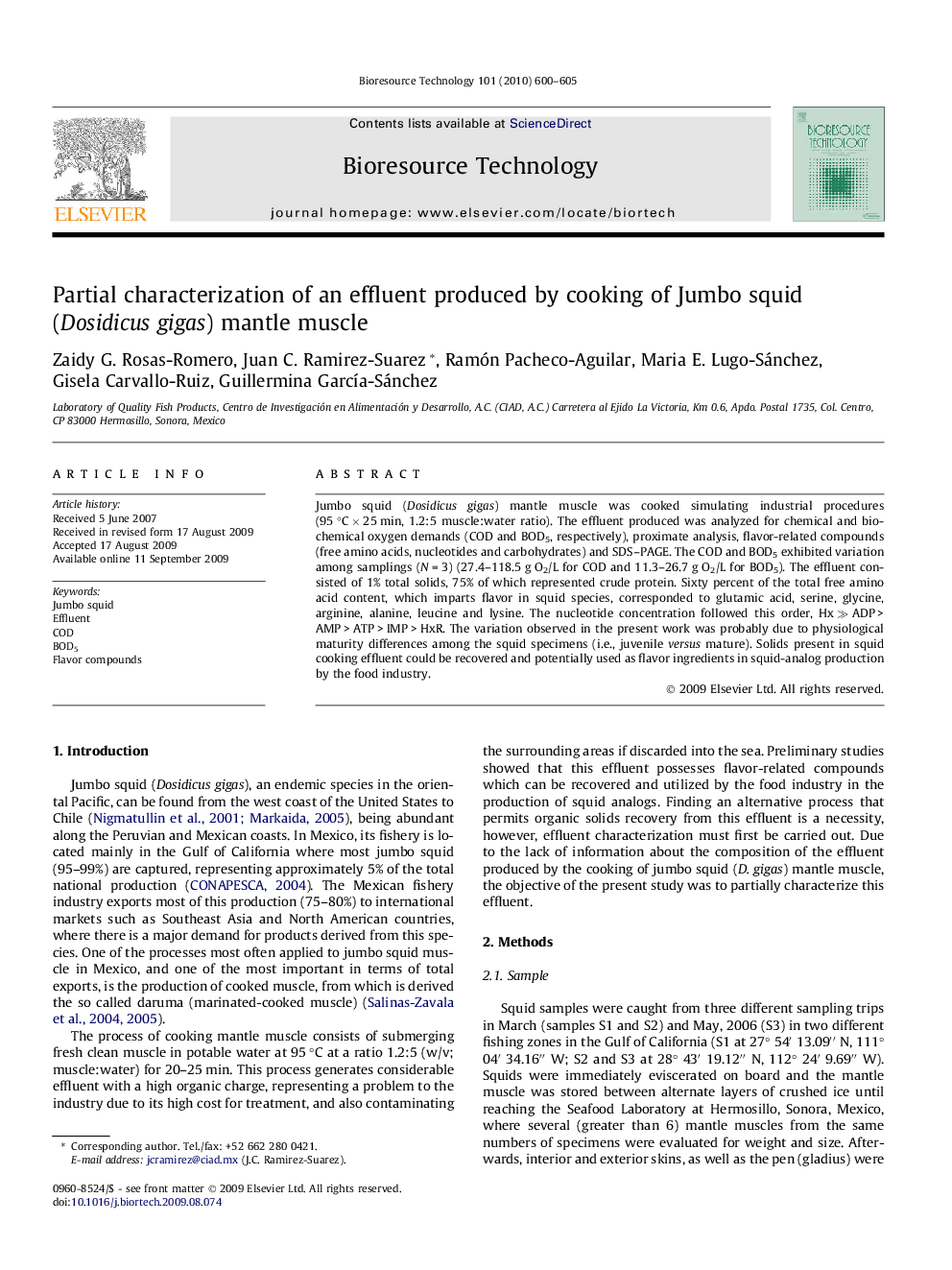| Article ID | Journal | Published Year | Pages | File Type |
|---|---|---|---|---|
| 684178 | Bioresource Technology | 2010 | 6 Pages |
Jumbo squid (Dosidicus gigas) mantle muscle was cooked simulating industrial procedures (95 °C × 25 min, 1.2:5 muscle:water ratio). The effluent produced was analyzed for chemical and biochemical oxygen demands (COD and BOD5, respectively), proximate analysis, flavor-related compounds (free amino acids, nucleotides and carbohydrates) and SDS–PAGE. The COD and BOD5 exhibited variation among samplings (N = 3) (27.4–118.5 g O2/L for COD and 11.3–26.7 g O2/L for BOD5). The effluent consisted of 1% total solids, 75% of which represented crude protein. Sixty percent of the total free amino acid content, which imparts flavor in squid species, corresponded to glutamic acid, serine, glycine, arginine, alanine, leucine and lysine. The nucleotide concentration followed this order, Hx ≫ ADP > AMP > ATP > IMP > HxR. The variation observed in the present work was probably due to physiological maturity differences among the squid specimens (i.e., juvenile versus mature). Solids present in squid cooking effluent could be recovered and potentially used as flavor ingredients in squid-analog production by the food industry.
